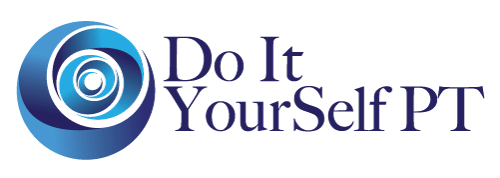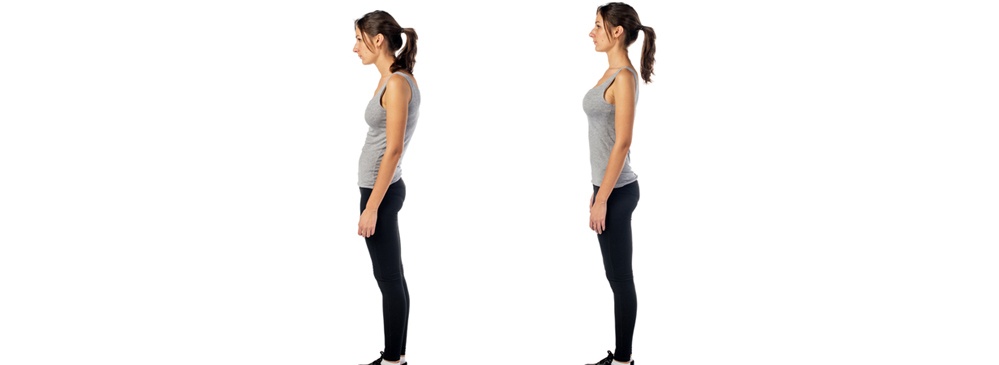The “DIYPT Posture Exercise”
an Alignment Based Approach to Reducing Pain.
Each one of us has a unique way in which we hold ourselves up against gravity while sitting, standing and walking. Like John Wayne, some of us are distinguished by our way of moving. At my father’s work, they referred to his stance as “The Pete lean” In fact, once when I stopped by my dad’s office and I was standing in the waiting room, his colleague came up and asked me if I was related to Pete DelVecchio. I said, “how did you know” and he replied, “you stand just like him”. That was before I herniated a couple of discs simply bending over to pick up a tissue, and before I became responsible for my alignment.
Though unique as they may be, our different ways of moving, sitting or standing are often part of the root cause of pain and injury. Herniated or bulging discs, back strains, degenerative disc disease, spinal stenosis, sciatica, osteoarthritis, bursitis, rotator cuff tears or tendonitis, carpal tunnel, knee wear and tear, plantar fasciitis and so many other common diagnoses are all biomechanical breakdown resulting from mal-alignment. It is true that a traumatic accident or force could also result in any of the above; nonetheless, most injuries are a result of subtle and cumulative micro-trauma that one day gives way into a pain that gets your attention.
First, let us take a look at what proper posture does before we discuss how to avoid and rehabilitate from the many injuries and diseases that are a result of poor posture.
Proper Posture:
- Allows muscles to be used correctly and efficiently by keeping bones and joints in the correct alignment.
- Decreases the stress on ligaments holding the joints of the spine and extremities together.
- Reduces the abnormal wearing of joint surfaces that could result in arthritis. (There is a biophysical principle known as Wolff’s law that states when a bone is abnormally stressed, it grows more bone. Bone spurs also known as osteoarthritis is an effect of this principle. More on this later…)
- Helps to keep the spine from becoming fixed in abnormal positions, ie. Acquired scoliosis, dowagers hump, sway back.
- Reduces fatigue because the body uses less energy as the muscles are used more efficiently.
- Prevents overuse strains, such as tendonitis.
- Prevents backache and muscular pain.
- Supports the health of vital organs within the abdomen. This includes supporting digestion and elimination.
- Can help to reduce osteoporosis compression fractures.
- Contributes to a pleasant appearance; often resulting in a person appearing more thin, noble, and confident.
We are either working with or against gravity. Either way, for us to be upright we are impacted by its force. Take for example those chronically tight muscles at the top of your shoulders. The ones that my patients tell me, “It’s where I hold my stress”.
Well, that may be true, but those tight muscles are also what is holding a forward head from doing a face plant into gravity’s grip. Those upper trapezius muscles are tight because they are placed in an improper position and asked to do a job they were not designed to do. Additionally, those same muscles are often incorrectly performing the work of stabilization that the lower larger core muscles should be doing. So, the good news is it may not be “stress”, rather it may be improper posture and movement strategies.
So, if we know that posture plays a role in supporting the health of joints, organs, muscles, overall vitality and the ability to move without pain then let’s look at what exactly is proper posture! I have created an exercise for you to learn, achieve and maintain proper posture. Try not to let yourself get overwhelmed. It is a lot at first. Simply give yourself time to practice the following instructions. In time, your body will get it.
DIYPT Posture Exercise
Let’s create a posture where your feet, knees, hips and shoulders are in parallel alignment with each joint directly over the other. This means if you were looking in the mirror front on, you should be able to draw a vertical line straight down from the shoulder, hip, knee to ankle. This is similar to the “military posture”, yet not so intense.
- Begin with the feet. Look down and make your feet be hip width apart and facing forward. Pretend you had to stand in train tracks in order to make the feet truly straight. Draw a line from your second toes straight back to the middle of your ankles. Are these two lines perfectly parallel?
- Now, check to see that you are standing equally on both feet. Be sure you have weight down through your heels as well as forefoot. Place equal weight in all four corners of the foot and equally from Right to Left.
- Gently hug the thigh bones with the muscles of the inner thigh, outer thigh and front of thighs. Include the muscles of the floor of the pelvis as if you were going to stop the flow of urination. And…
- Maintain a slight forward arch in the small of the back while you GENTLY draw your naval up and in. To do this: Picture your belly button as an elevator going up the spine. Do not let your back flatten as you do this and only engage the core as much as you can still breathe comfortably. This is very subtle and only a slight muscle activation.
- Visualize a ray of light rising up from the base of your spine to the top of your head. As it spirals upward allow yourself to grow ½ an inch taller. Think length. Notice how the spine lengthens up as the core engages. A natural slight lift of the chest may occur, however do not stick your chest out forcefully. You are doing great, almost there.
- Now, as your stay tall, allow the shoulder blades to drape down & back on the spine. Imagine your right shoulder blade moving towards your left back pocket, and your left shoulder blade drops down towards your right back pocket.
- Relax your shoulders intending for them to move away from one another towards opposite sides of the room. Remember to continue lengthening up from the base of the spine as you do this
- Great, now imagine your head is a fountain, bubbling up towards the sky as the back of your head lifts slightly up & forward. This releases the over worked muscles at the base of the skull and upper neck.
You did it! Now try to stay tall, but make this comfortable.
Can you soften into this posture? BREATHE EASY!
Breathe in fully & let the Ribcage expand out like wings of a bird; breath out fully & soften even more.
- Now, simply read these instructions over and over in front of a mirror until your body has it memorized.
- Practice, practice and practice.
- Try it when you are standing in line at the store, or wherever you find yourself standing around.
- Practice keeping this posture when you are walking. Perhaps when you get up from your desk to walk to the restroom, or while walking to your car, or while running errands.
- This postural re-education will take time, be gentle yet persistent in your practice.
- Write sticky notes around your home and office reminding you of your Posture. Perhaps a note may simply have the word, “Lengthen” on it.
- Teach your children this practice. The best medicine is prevention!
The above postural instructions are just a beginning. The next step is making sure you know how to sit correctly and move properly. For more information on proper alignment and movement, check out https://doityourselfpt.com/ and sign up for the back Platinum Program.
Tags: diypt posture exercise | postural therapy | posture exercise | proper alignment and posture | proper posture benefits | reduce pain
Copyright © by Kimberly DelVecchio, PT
Kimberly DelVecchio, Licensed Physical Therapist, is the owner of Integrative Physical Therapy in Clifton Park NY, a comprehensive physical therapy clinic specializing in orthopedic health issues. IPT: 1 Barney Rd. suite 120 Clifton Park, NY 12065.

